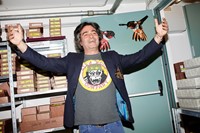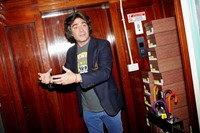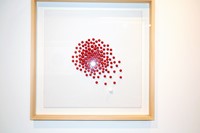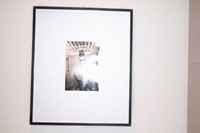I’m standing in a stockroom on Milan’s Via Montenapoleone, while a party throbs seductively above. Opposite, gesticulating with wild Italian flourish, is Kean Etro, the effusive menswear designer, eager to explain why we’re cowering in the basement of his family’s flagship store. We’ve taken refuge underground in order to grab some precious peace and quiet. On the three floors above, Milanese hipsters of all ages are immersed in a unique in-store experience. Fuelled by Prosecco and moreish olive bread, the guests are witnessing a live presentation from a unique collective of artists, photographers and musicians, all happily immersed in just ‘being’. It’s performance, it’s philosophy, it’s poetry without words.
“The Circle Of Poets” is Etro’s baby – an unusual project that has brought together eleven young talents in the spirit of art and anthropology. It harks back to the literary salons of the 19th century, where in Italy a salon was defined as a gathering of people under the roof of an inspiring host, held partly to amuse one another, and partly to refine their taste and knowledge.
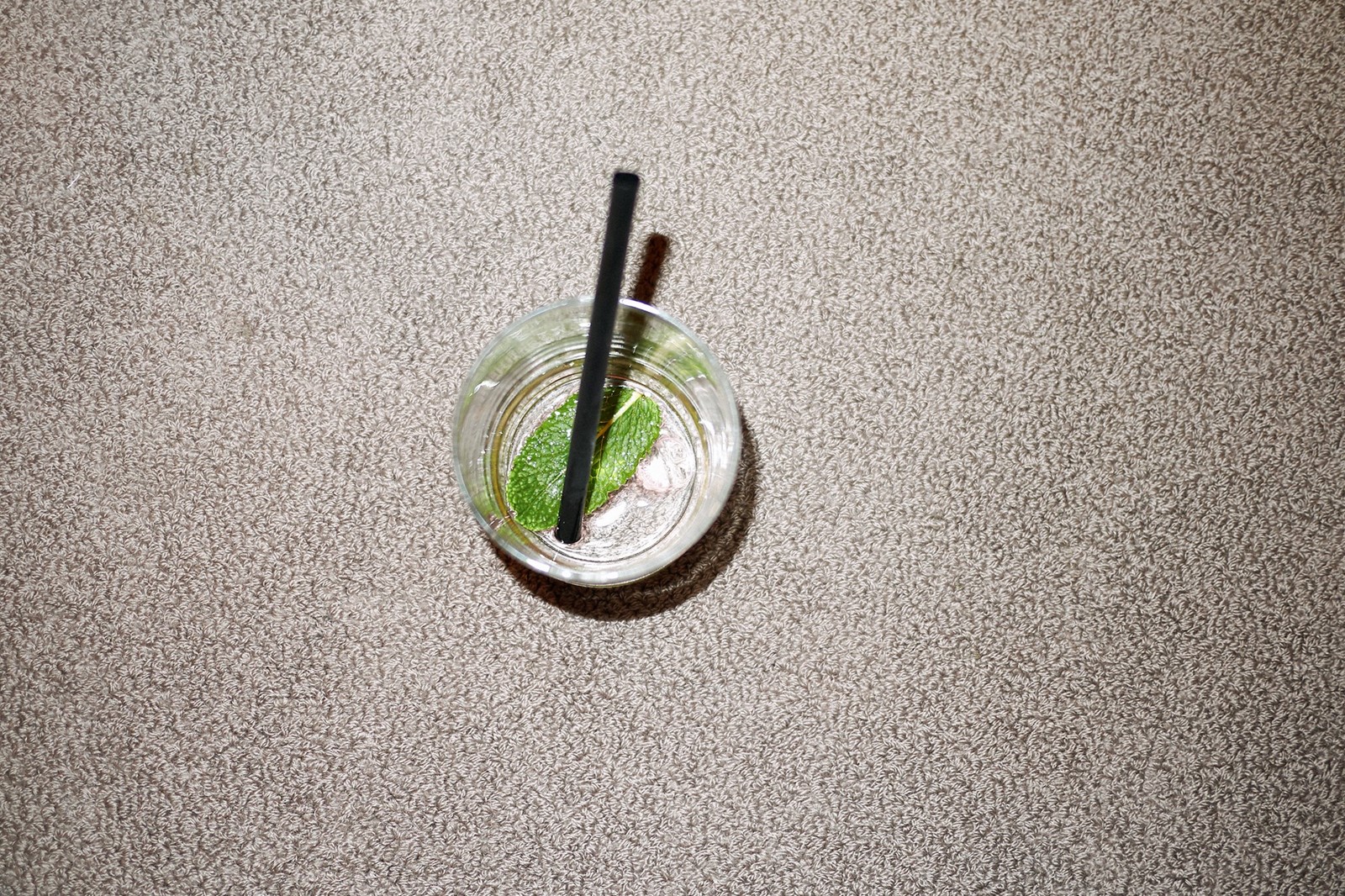
“These people are all extraordinary in their own way,” gushes the 51-year old, an open, expressive man with a roguish face and charismatic aura. He tells me he wanted to create “an interactive museum/laboratory,” where each of his ‘discoveries’ could show off their respective talents, “and learn something from each other.” Notable examples include the tattoo artist, Eduardo Tabbachi, photographer, Nicolo Gialin, and the architect, Matteo Ciabattini.
He is an educated, romantic soul who cannot resist intriguing hyperbole “There is graffiti on a wall around the corner from here that has a profound message. It reads, ‘Poetry doesn’t need any words’, and I just love that notion. All my ‘poets’ live in the same district as me, Brera, so, we’re having breakfast and things, and exchanging ideas, and then I’ve seen that they all have the same energy. They are kind boys. Kind to me is the idea of a gentle, gentle man. The gentleness is important. I think creativity is very much feminine, but can be part of men through creativity as well. That side of someone’s character or attitude can change things nowadays for the better.”
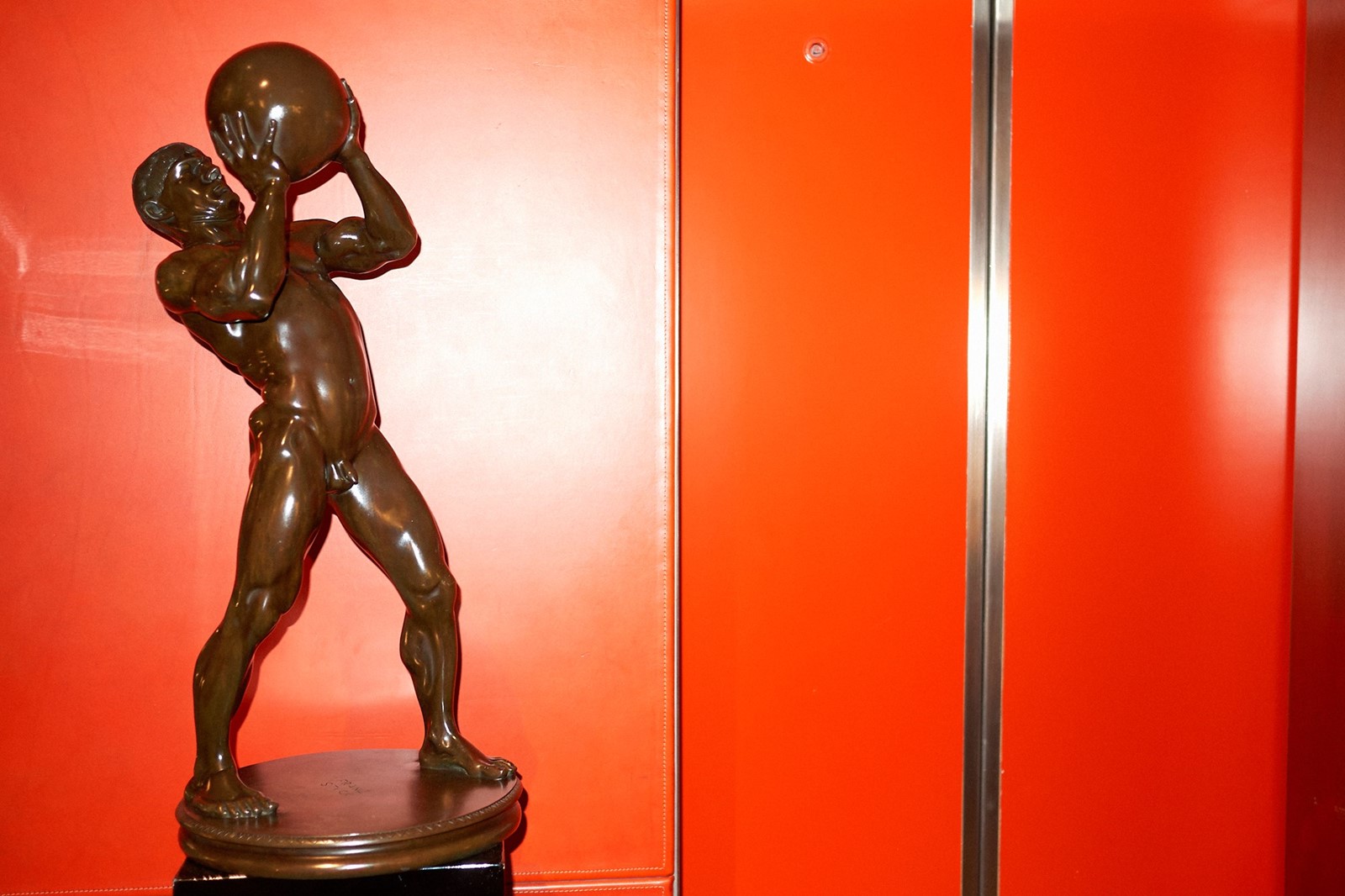
Walk through Milan’s luxury fashion district, past the temples of glossy capitalism, and you could easily miss the hidden courtyards that reveal a more interesting geography. The city itself is often dismissed as an unpretty industrial hub, but in reality Milan’s history is characterised by great ingenuity and a creative force that built its reputation. “But there are not enough young designers here. You find them elsewhere – in Paris, London, New York, even Tokyo – but not here. We are a little bit conservative, almost bourgeois.”
He first met his protégés at Milan’s Fashion Film Festival, an event organised by his wife, Constanza. “They were already part of a loose collective,” he says, “but then we strengthened that. Everyone is under 30 years old, but they have such ENERGY! Have you noticed in society now that most people have lost an idea of the future? It’s like, how can I be happy? What are my ideas and goals? Where am I going? But we still have love, and nature, which I have a great regard for, and everyone involved in this project understands that. They have a direction, I have a direction, so we make a circle. This circle is an ideal dimension to portray through fashion or whatever you want. But that is not the starting point, I’m not looking for fashion inspiration from them. I’ve been bringing money to this company for 30 years, otherwise my father would have kicked me out!”

Etro is a revolutionary spirit, sometimes disabled by rhetoric but charming nonetheless. “My father was a revolutionary too, right from when he started the company in ‘68, always so edgy and far fetched. We both have strong ideas about art and culture that push against the mainstream, but he taught me that you can learn more and more each day.”
Does he consider himself a conceptual designer? “Well, you know, I’m a little built of a trickster as well, a clown. I think I try to make people a little bit happier. That’s why Veronica, my sister, who designs the womenswear, we both go for colour, for that visual embrace which is ethnicity and multicultural. For us, it’s never been about business. This is not a link to the brand, it is just an urge, and I want it to be an on-going concern through social media. I want my poets to be happy and see them grow, to see them fly. Like the American Indians used to say – do you want to make a nice sound when you walk on this earth, or do you want to make a cacophony?”


